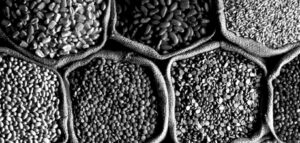
Are all carbs bad?
Not all carbs are created equal; just as there are good fats and bad fats, there are good carbs and bad carbs. The trick is not to cut carbs completely, but rather to be choosy about the ones you regularly eat. If you want to try going lower-carb then white bread, white pasta, potatoes and sugars, including maple syrup and agave nectar, are best eaten sparingly, if at all. They are easily digestible carbohydrates, meaning they are rapidly absorbed by the body, creating a big spike in your blood-sugar levels.
Instead,
eat carbohydrates that contain lots of fibre. Fibre reduces the blood sugar
spike, provides protection against bowel cancer and feeds the ‘good’ bacteria
that live in your guts. Examples include vegetables, legumes – chickpeas and
lentils – and wholegrains such as barley, oats, buckwheat, and wholegrain and
rye.
A sensible approach to a low-carb diet is to cut out sugar and cut down on white (easily digestible) carbs such as bread, pasta and rice. Eat plenty of blueberries, strawberries and raspberries, which are relatively low in fruit sugar, and green vegetables, protein, butter, full-fat yogurt and olive oil to retain fullness.
Second-day pasta can keep off the pounds
One way to reduce blood-sugar spikes after you eat carbs such as pasta, potatoes or rice is to cook, cool and then reheat them.
Under an experiment it was discovered that cooking, cooling and reheating the pasta had a dramatic effect, cutting the average rise in their blood sugar levels by 50 per cent. That’s because it changes the structure of the starch in the pasta, making it more resistant to digestive enzymes, so you get smaller blood-sugar spikes. Less of this ‘resistant’ starch is digested, leaving more to travel down and feed the ‘good’ bacteria in the large intestine.



